Eve Motion Review: Smart, Speedy, and Ultra-Reliable
Motion sensors play a critical role in automating and securing our smart homes. With their wire-free ability to turn on the lights when our hands are full, and sending smart notifications for potential activity around our homes, it's hard to imagine life without them. This includes the Eve Motion, which I have been using to automate my home over the course of the past year.
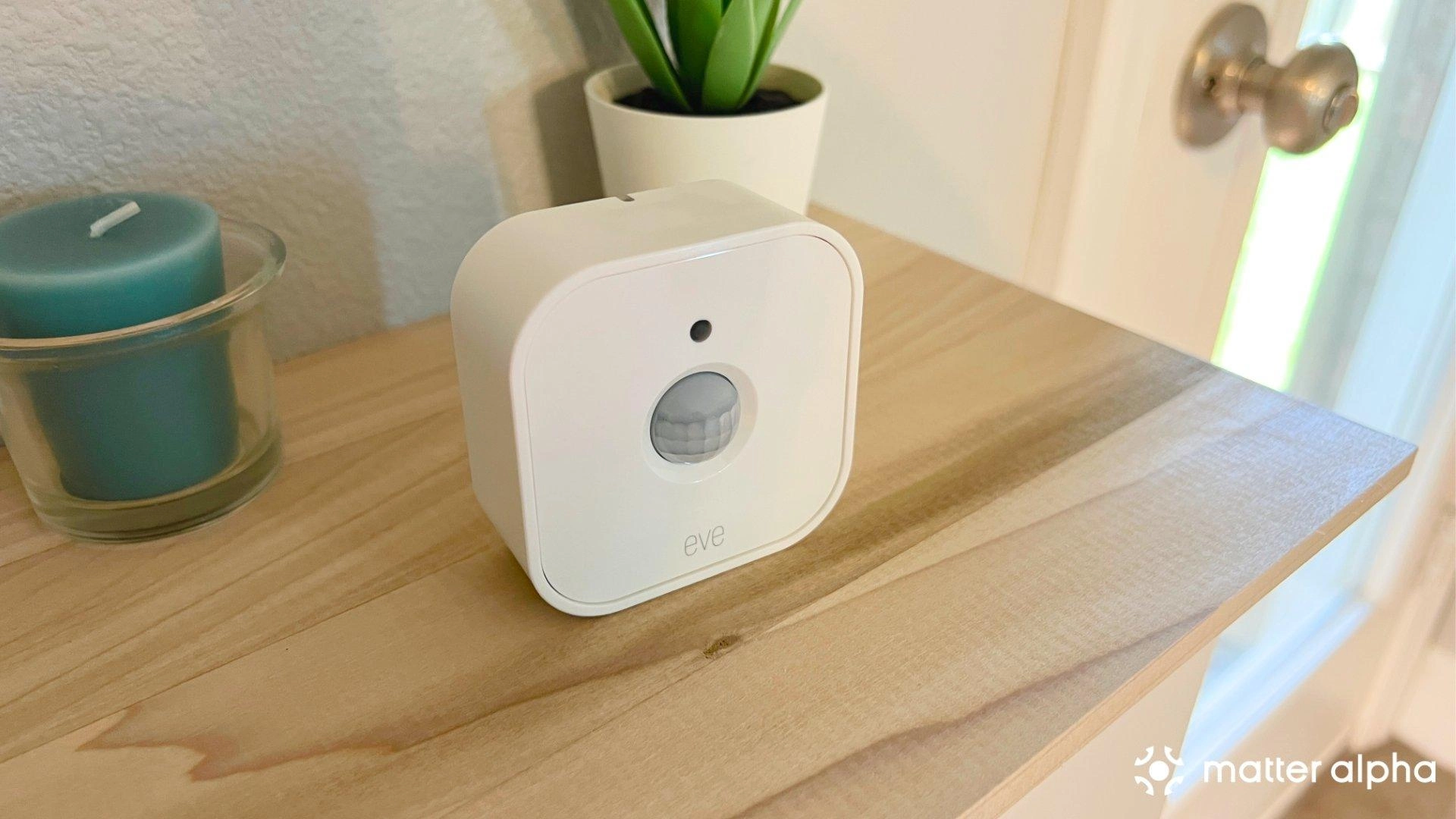
Please note: This page may contain affiliate links. Read our ethics policy
Motion sensors play a critical role in automating and securing our smart homes. With their wire-free ability to turn on the lights when our hands are full, and sending smart notifications for potential activity around our homes, it's hard to imagine life without them.
The latest crop of motion sensors build on their incredibly already useful foundations by incorporating the newest standards and technologies—like Matter and Thread—making them a great place to start for smart home beginners and vets alike.
This includes the Eve Motion, which I have been using to automate my home over the course of the past year. Eve's motion sensor is smart, speedy, and ultra-reliable, which is why I believe that it is one of the best options around.
Eve Motion Unboxing and Design
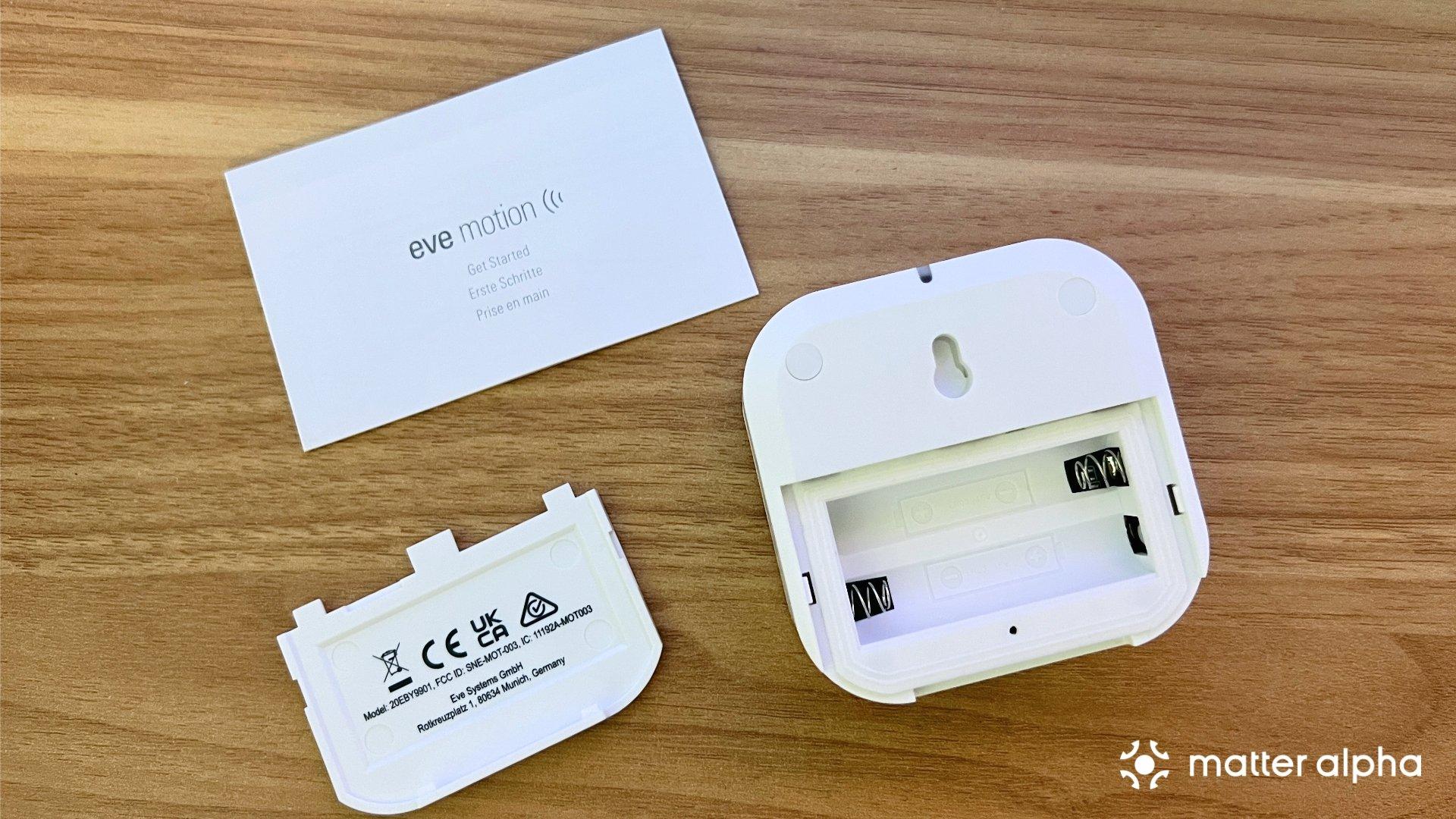
Eve's smart home products are perhaps best known for their simple yet elegant designs, cutting-edge features, and higher-than-average prices, so unsurprisingly, Eve Motion continues this trend. After plunking down $49.95 U.S., you'll find the all-white plastic Eve Motion sensor, two AAA batteries, and a user manual complete with a backup Matter pairing code in the box.
The Eve Motion, features a square design, measuring 2.56 x 2.56 x 1.34 inches, making it slightly larger than competitors like the Aqara P2 Motion and Light Sensor, but still small in its own right. On the front of the unit, you'll find just the windows for the built-in motion and light sensors, and a light Eve logo giving the entire package a clean look.
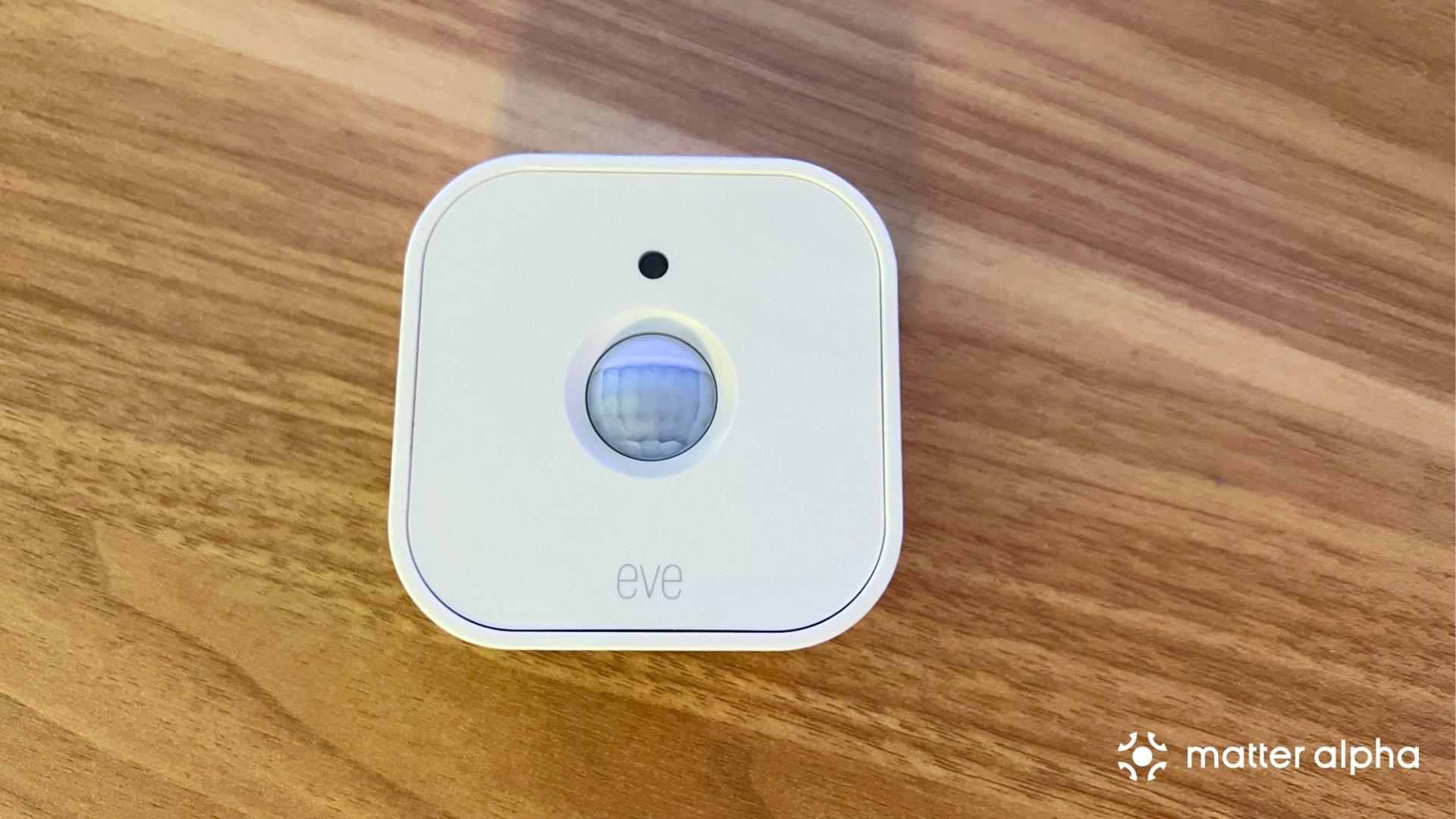
Around the top of the unit is a small LED indicator light which by default will display a flashing red light when motion is detected and when the unit is in pairing mode. The LED wraps around to the back of the device, ending just above an indentation used for wall mounting purposes—although no hardware is provided in the box.
Further down is a removable cover which houses the required batteries and a pin-hole reset port that requires a tool to access. Finally, the underside of the Eve Motion is home to a Matter pairing code sticker which hides neatly out of the way when the unit is placed on a flat surface.
Eve Motion Specs and Connectivity
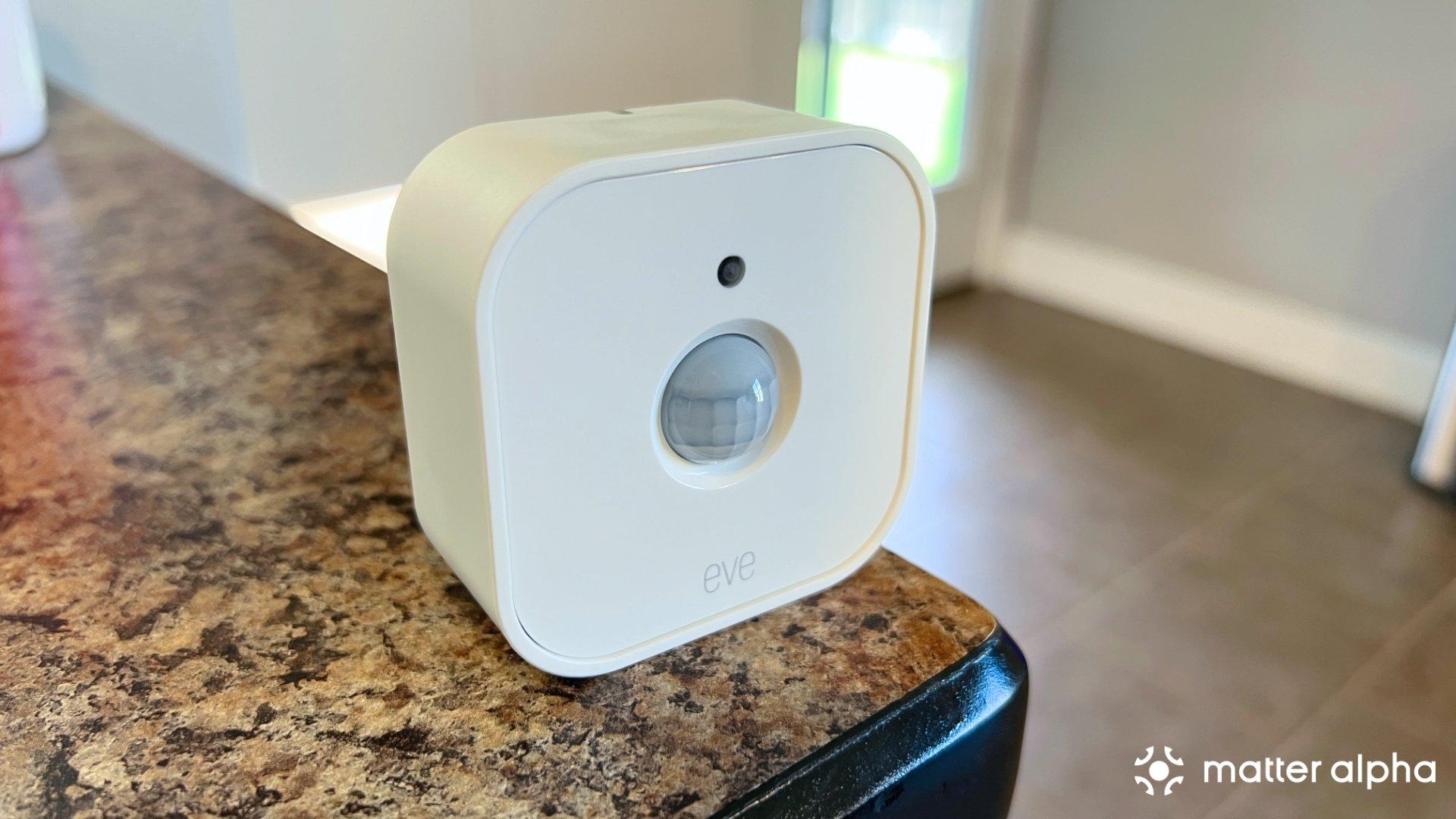
Even though the Eve Motion sports a simplistic design on the outside, a lot is going on under the hood. For starters, the Eve Motion features a wide-angle 120-degree field of view that can capture events up to 30 feet away.
The Eve Motion also provides light measurements in the form of Lux (luminous flux) values ranging from 0-15,000 lumens. Both of these built-in sensors can operate in indoor and outdoor settings, in temperatures between 0-130 degrees Fahrenheit, and are protected by an IPX3 weather-resistant frame.
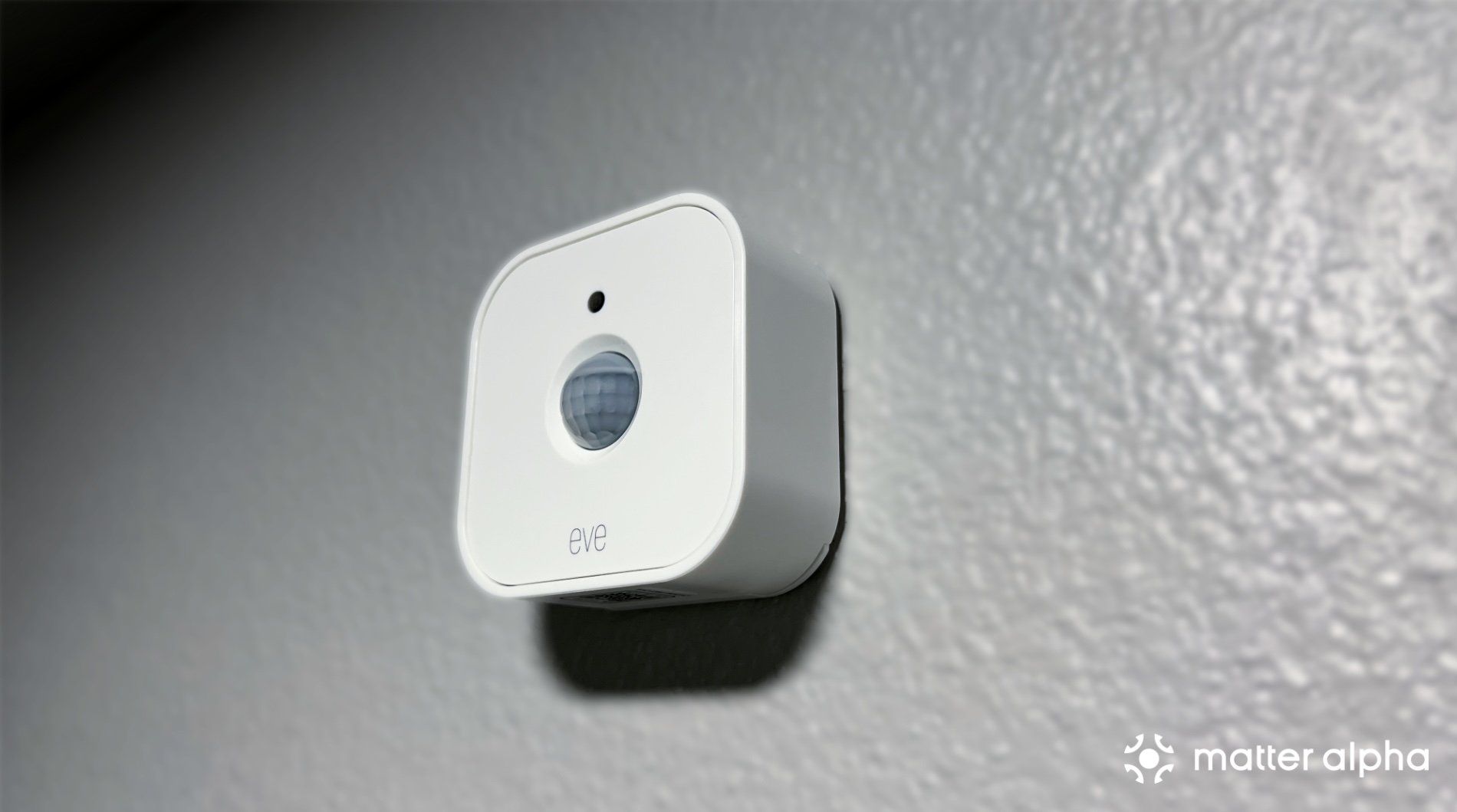
Eve's motion sensor relays measurements to Matter platforms like Alexa, Google Home, and Apple Home via Thread mesh networking technology. Thread allows the Eve Motion to operate without an Eve-branded hub, but you will need a Thread Border Router to connect it to your smart home.
While there aren't a ton of settings to be found with the Eve Motion, there are a few essential options in the Eve app. These include a motion detection delay ranging from 5 seconds all the way up to 15 hours, an onboard LED toggle, and three sensitivity settings—low, medium, and high.
Eve Motion Setup
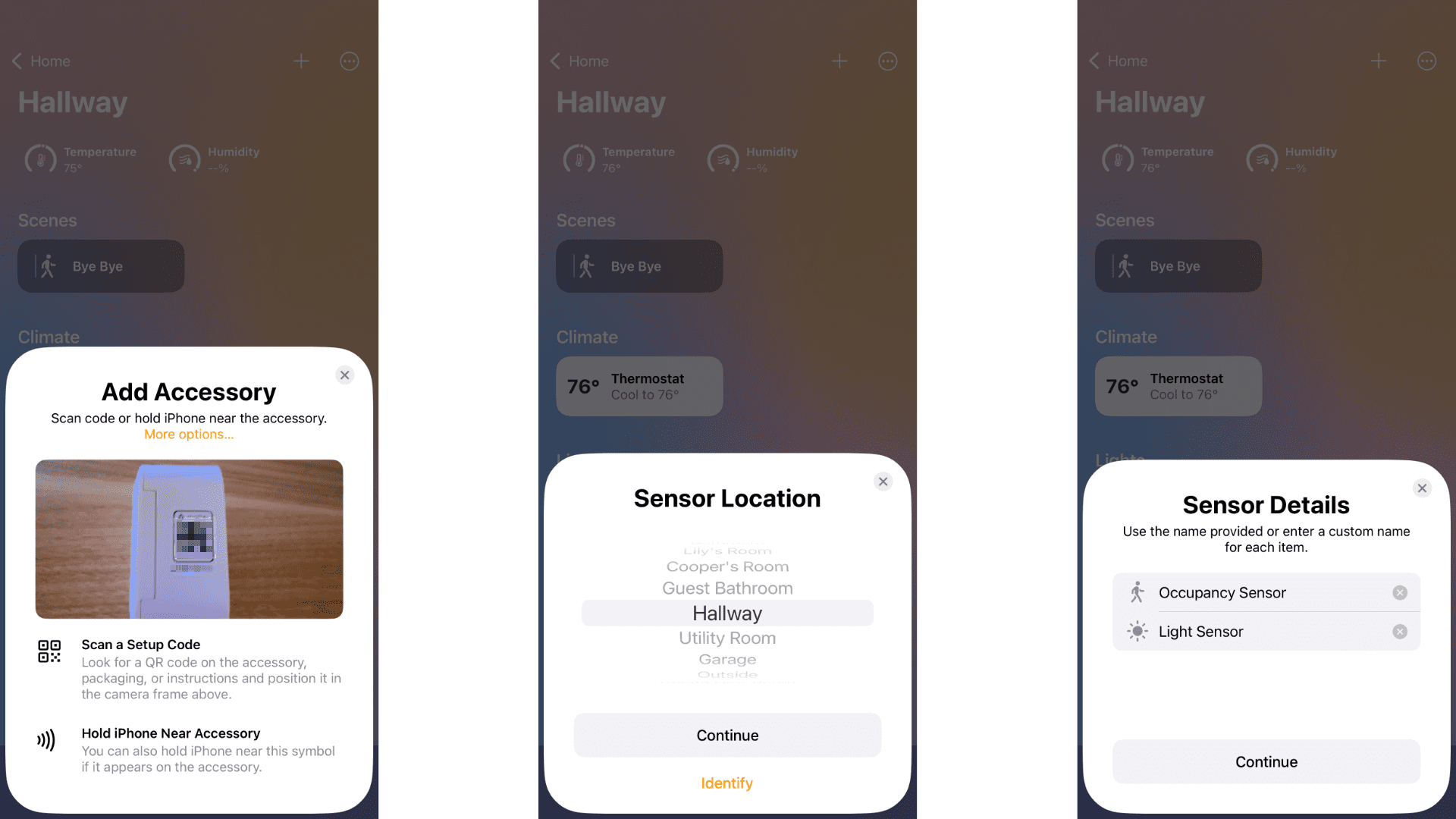
Like my experience with the Eve Energy smart plug, setting the Eve Motion up through the Apple Home app was quick and easy. All it took was a simple scan of the on-device QR code and assigning it a name and location in my existing smart home before it was ready to go.
After pairing, I was able to track down the sensor's motion and light measurements amongst other passive devices in the status area of a room in the Home app. While it didn't affect operation, I found it odd that the Eve Motion appeared as an occupancy sensor, but apparently, that is just how the Matter specifications refer to them as of now.

In addition to Apple's smart home platform, I also use the Google Home app for testing Multi-Admin functionality of Matter devices. After turning on pairing mode, the Google Home app greeted me with a pop-up card indicating that it had already found the Eve Motion—a really nice touch.
From there, I only needed to tap Set up, proceed through a few organization steps, and once paired, it appeared as one “sensor” device with both light and motion capabilities. The whole process was rather seamless and worked exactly how Matter is supposed to work.
Eve Motion Performance and Automation
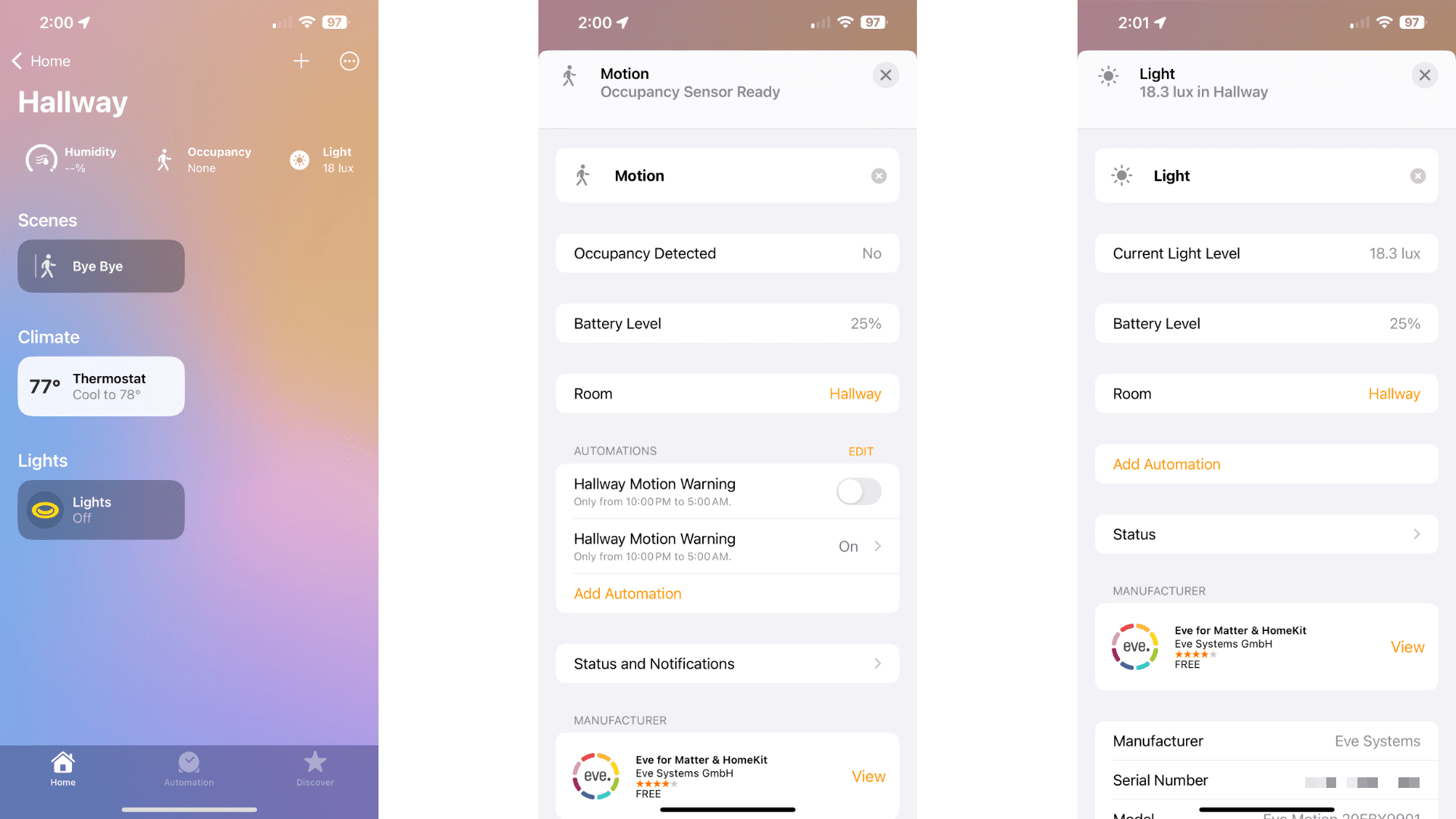
As you might expect by having motion in its name, the Eve Motion shines when it comes to performance. Right out of the box, the Eve Motion picked up events within its view pretty much instantly, with the onboard LED indicator flashing red as a confirmation.
The same speediness was also present after assigning it to an automation through the Apple Home app. Even with various factors at play including wireless connectivity and home hub responsiveness, the Eve Motion was consistently reliable, triggering lights and sending alerts in around a second or less.
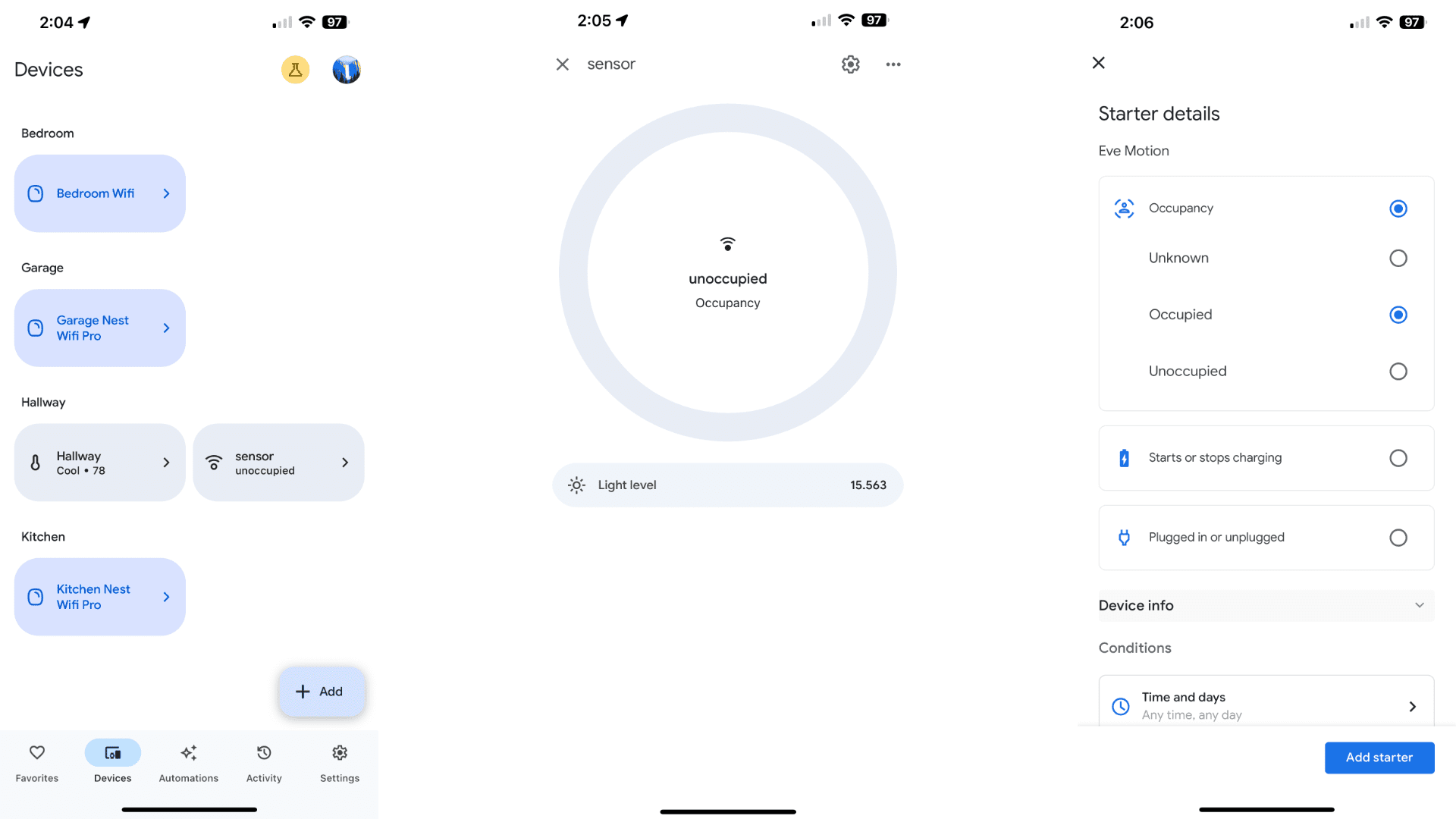
The Eve Motion's light sensor was also speedy and responsive. During my testing, I found that the Eve Motion provided updated Lux measurements quickly, with the Apple Home app reacting to changes such as a light turning on in a dark room within 10 seconds or less.
Despite the integrated light sensor performing reasonably well, I will admit that I simply could not find a real-world application for it in my household. Google must also see light sensing as a niche category too, as its app doesn't allow Lux to be used as a starter in automation—although the Apple and Eve apps did.
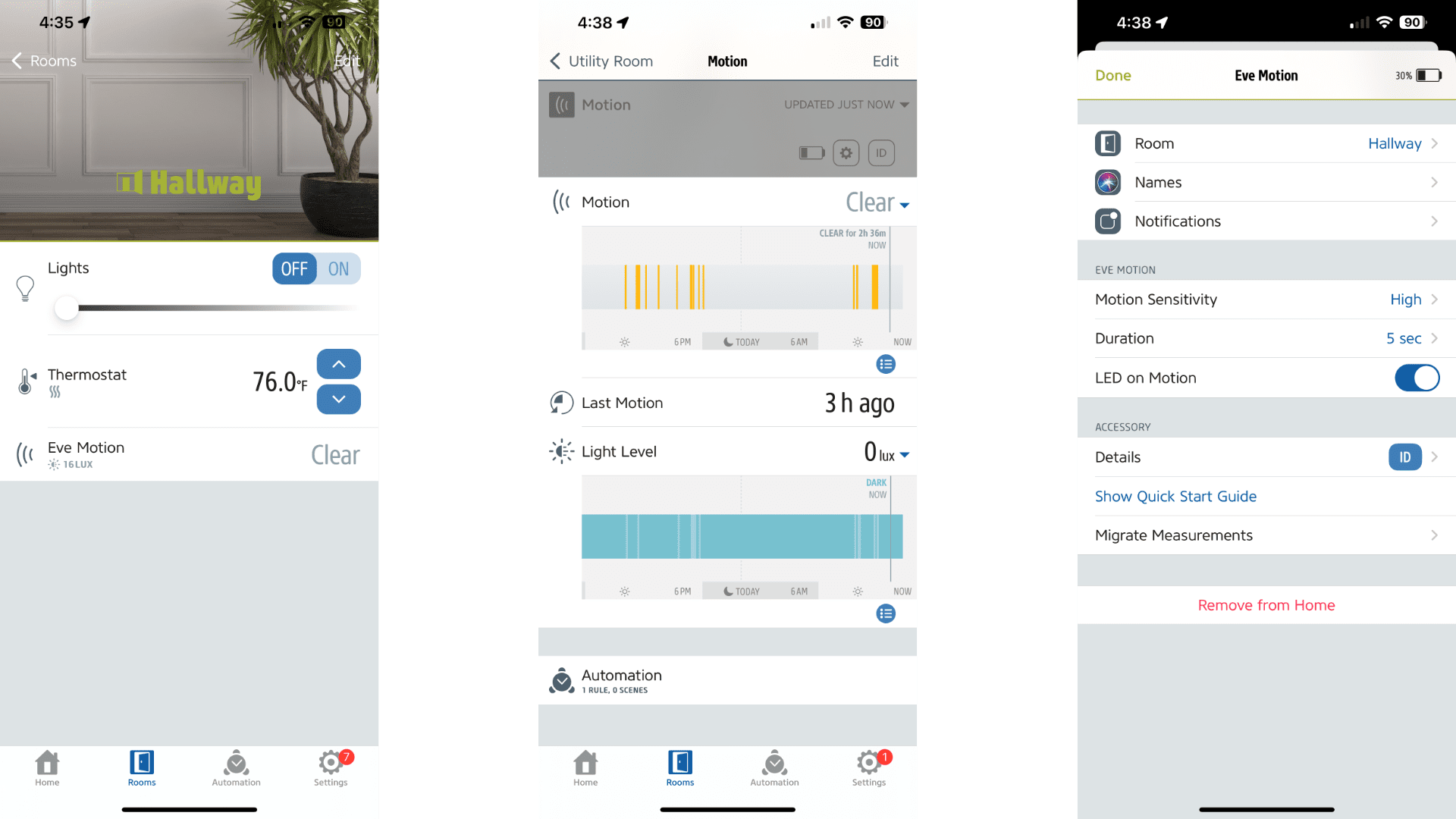
The only areas where the Eve Motion wasn't quite so speedy were applying settings and reviewing measurements in the Eve for Matter and HomeKit iOS app. Occasionally, attempting to toggle options for sensitivity and duration settings took a few tries for them to apply, and graphs and logs are only updated when visiting the device in the app—not in the background.
Android users won't experience these issues though as unfortunately, there isn't an app available on the Google Play Store currently. Eve has promised an Android app since late 2022 but hasn't yet delivered so that means that users won't have access to any of its settings and will need to rely on the defaults until it finally becomes available.
Eve Motion: Smart, Speedy, and Ultra-Reliable
With incredible performance and rock-solid reliability that you typically only see in motion sensors tied to a hub, the Eve Motion is already rather easy to recommend. Add in weather resistance and great battery life and you get one of the best Matter-compatible motion sensors on the market today.
It certainly isn't perfect—especially with a missing Android app and a higher-than-average starting price—but Thread connectivity and Matter's multi-admin capabilities make it a must-have for both smart home newbies and those looking to expand their smart homes.
About the Author

Christopher Close
Smart Home Editor
After graduating with a BAS in Technology Administration, Christopher has been covering Matter, Apple HomeKit, and the smart home industry for various sites including iMore, MakeUseOf, HomeKit News, and HomeKit Hero since 2018. Whether it is installing smart light switches, testing the latest door locks, or automating his households daily routines, Christopher has done it all.
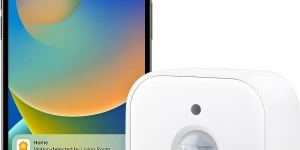
Eve Motion
Eve Motion is a future-proof security device that uses Matter and Thread technology to provide a responsive and reliable smart home network, offering motion-based automations, IPX3 water resistance for indoor and outdoor use, and a commitment to privacy with no cloud or tracking, all while giving you control across multiple platforms.